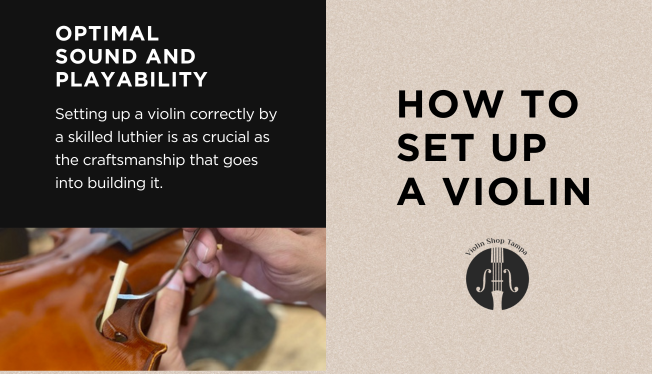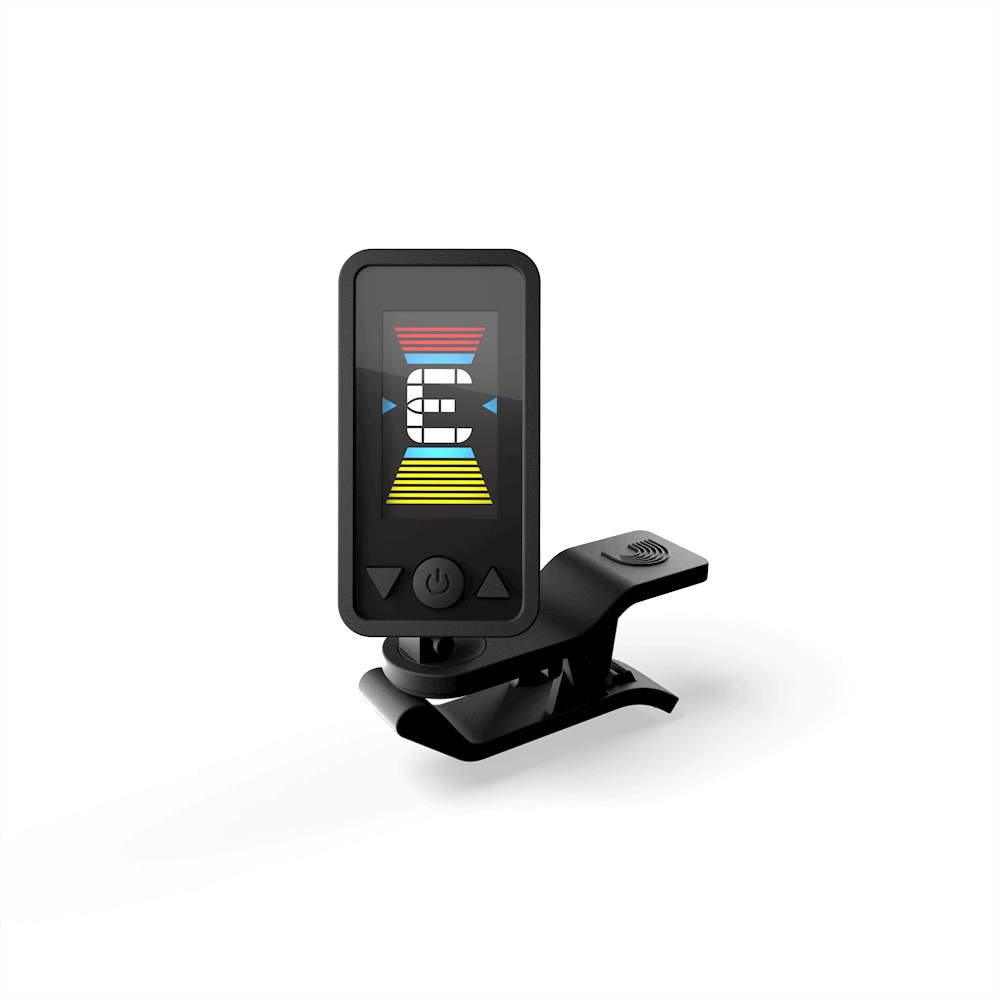Setting up a violin correctly is just as important as building it. A skilled luthier's setup ensures the violin sounds its best and is easy to play. This process involves adjusting the bridge, sound post, strings, and pegs. Each part is crucial to the violin's performance. Let’s delve deeper into each component and understand why they matter so much.
Bridge and Sound Post Adjustments
The bridge and sound post are vital for transmitting sound from the strings to the violin's body. The bridge's position affects the instrument's tone and playability. It must be carved and positioned precisely to balance the string tension evenly. The bridge's curvature should make string crossing easy while maintaining the right string height to prevent buzzing against the fingerboard.
Understanding the Bridge
The bridge serves as a critical link between the strings and the violin’s body. It’s more than just a support piece; it’s essential for sound transmission. The bridge’s height, thickness, and the precise way it’s cut all influence the sound quality. If it’s too high, it can make playing difficult and uncomfortable, and if it’s too low, it can cause buzzing against the fingerboard. A well-fitted bridge allows for comfortable playability and clear, resonant sound.
For instance, imagine the bridge as the key element in a stereo system that transfers music from the source to the speakers. If the connection isn’t good, the sound quality suffers. Similarly, the bridge must be finely adjusted to ensure the strings' vibrations are effectively transferred to the violin's body, producing a rich, vibrant sound.

Positioning the Sound Post
The sound post, often called the "soul" of the violin, needs to be positioned under the bridge's treble side. Its placement isn’t fixed and requires fine adjustments to enhance the violin's tone. Even a small change in the sound post's position can alter the instrument's sound, making it either too bright or too muted. So, precise placement is essential to achieve the desired sound qualities.
Think of the sound post as the spinal column of the violin. Just as our spine supports our body and facilitates movement, the sound post supports the violin’s internal structure and helps transmit vibrations. It’s positioned inside the violin under the right bridge foot. A skilled luthier adjusts the sound post’s position carefully because even a millimeter change can affect the sound dramatically. This meticulous adjustment process is akin to fine-tuning a musical instrument to hit the perfect note.


String Quality and Peg Functionality
Choosing the right strings is crucial for sound quality and ease of play. Strings differ in material and tension, and selecting the right set can enhance the violin's tone and responsiveness. The choice often depends on the violinist's preference and the music style. Proper string installation and even tension are necessary to maintain the bridge and sound post adjustments.
Selecting the Right Strings
Strings come in different materials, such as gut, synthetic, and steel. Each type has its unique characteristics. Gut strings, for instance, produce a warm, complex tone but require frequent tuning. Synthetic strings offer a balance between warm tone and stability, while steel strings provide a bright, focused sound and are highly durable.
Choosing the right strings is like picking the right tires for your car. You need to consider the driving conditions and your preferences. Similarly, violinists choose strings based on their playing style, the music they perform, and their instrument’s characteristics. Properly installed strings enhance the violin's sound and make it easier to play.
Ensuring Peg Functionality
Pegs must turn smoothly and hold the strings securely in tune. This involves shaping the pegs to fit snugly within the pegbox holes, allowing for easy tuning adjustments. Proper peg fitting not only helps with tuning stability but also prevents damage to the pegbox.
Pegs are like the gears in a bicycle. If the gears don’t fit well or move smoothly, the bike is hard to ride. Similarly, if the pegs don’t turn easily or hold the strings firmly, tuning becomes difficult and the instrument’s playability suffers. Well-fitted pegs allow for precise tuning and stable pitch, which are essential for any violinist.

Tailpiece and Chinrest Considerations
The tailpiece anchors the strings and can affect the violin's sound based on its weight and material. A lighter tailpiece may increase responsiveness, while a heavier one might enhance tonal depth. The chinrest must be comfortable for the player to avoid tension or strain during play, which can impact performance and sound.
Tailpiece Role and Selection
The tailpiece plays a significant role in the violin’s sound production. It’s connected to the end button by a tailgut and holds the strings at a precise distance from the bridge. The tailpiece’s weight and material influence the instrument’s resonance and tonal qualities.
Think of the tailpiece as the suspension system in a car. It affects how the car handles and performs. A lighter tailpiece can make the violin more responsive and easier to play, while a heavier one can enhance the instrument’s tonal richness. Choosing the right tailpiece involves balancing these factors to suit the player’s needs and the violin’s characteristics.
Chinrest Comfort and Functionality
The chinrest must be comfortable for the player to avoid tension or strain during play. An uncomfortable chinrest can lead to physical discomfort and affect the violinist’s performance. It should be positioned to allow a natural and relaxed playing posture.
The chinrest is like the seat in your car. If it’s not comfortable, driving becomes a chore. Similarly, a well-fitted chinrest makes playing the violin more enjoyable and prevents physical strain. It’s essential to choose a chinrest that fits the player’s anatomy and playing style.
The Nuances of Violin Setup
Setting up a violin involves a delicate balance of adjusting various components to work in harmony. Each adjustment can significantly impact the instrument’s sound and playability. Skilled luthiers understand these nuances and use their expertise to bring out the best in each violin.
The Art of Luthier Craftsmanship
Luthiers spend years mastering the skills needed to set up violins. They learn to listen to the instrument, understand its unique characteristics, and make precise adjustments. Their craftsmanship combines art and science, creating instruments that not only look beautiful but also produce exquisite sound.
Imagine a luthier as a master chef who knows how to combine ingredients perfectly to create a delicious dish. Each violin has its recipe, and the luthier knows how to mix the components—bridge, sound post, strings, pegs, tailpiece, and chinrest—to create an instrument that sings.
The Evolving Techniques and Tools
As violin making evolves, so do the techniques and tools used in setup. Modern luthiers have access to advanced materials and precision tools that allow for even more refined adjustments. However, the fundamental principles of violin setup remain the same.
Balancing Tradition and Innovation
While new tools and materials offer exciting possibilities, the essence of violin setup lies in traditional craftsmanship. Luthiers blend time-honored techniques with modern innovations to enhance the instrument’s performance.
Think of this blend as using both a classic recipe and new cooking technology to make a meal. The result is an instrument that benefits from the best of both worlds—traditional sound quality and modern playability.


Conclusion
Properly setting up a violin is crucial for its function and sound. This process requires understanding how each component interacts. Expert luthiers spend years mastering these skills to ensure each violin sounds and plays its best. As violin-making evolves, so do the techniques and tools for setting up these complex instruments. The goal remains the same: to bring out the unique voice of each violin.
In conclusion, setting up a violin is an intricate process that involves careful adjustments of various components. Each adjustment, whether it’s the bridge, sound post, strings, pegs, tailpiece, or chinrest, plays a critical role in the violin’s overall performance. The skill and expertise of the luthier are paramount in achieving the best possible sound and playability for the instrument. Through a combination of traditional craftsmanship and modern techniques, luthiers continue to refine their art, ensuring that each violin they work on reaches its full potential.
Stay updated with the latest tips on violin care and setup techniques. Join our newsletter for expert advice and exclusive offers.







